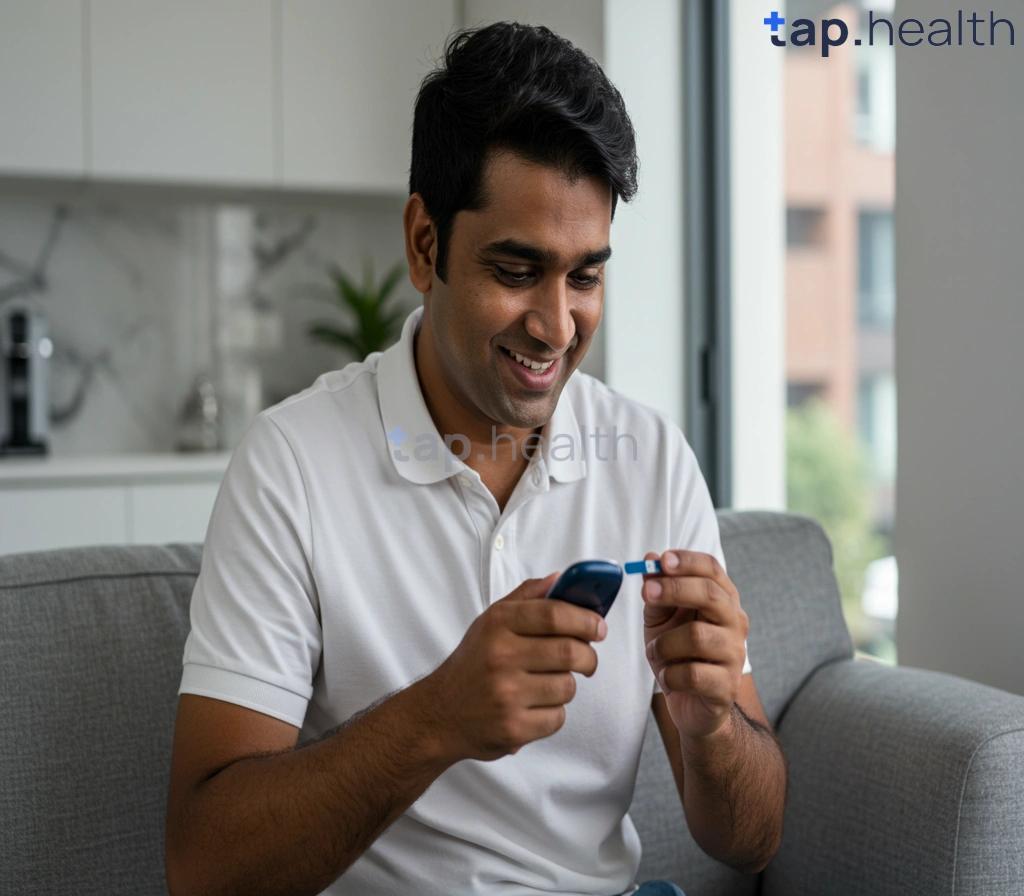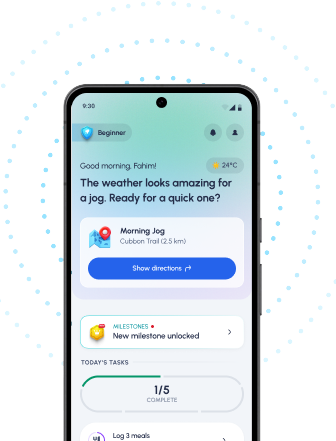Table of Contents
- Preventing Falls in Diabetic Children: A Comprehensive Guide
- Diabetes & Falls in Kids: Safety Tips and Prevention Strategies
- How to Reduce Fall Risks for Children with Diabetes
- Safeguarding Diabetic Children: Preventing Falls at Home and School
- Is Your Diabetic Child at Risk of Falls? Key Prevention Measures
- Frequently Asked Questions
- References
As parents of children with diabetes, we know how much energy and focus goes into managing their health. But did you know that falls are a significant concern for this population? This often overlooked safety issue can lead to serious injuries. That’s why we’ve created this comprehensive guide on Preventing Falls in Children with Diabetes: A Safety Guide. We’ll explore practical strategies, from addressing potential health complications to making simple home modifications, to help you keep your child safe and healthy. Let’s dive in and learn how to minimize fall risks and create a safer environment for your little one.
Preventing Falls in Diabetic Children: A Comprehensive Guide
Falls pose a significant risk to children with diabetes, especially considering the increased vulnerability of their feet. Nearly 15% of diabetics experience foot ulcers in their lifetime, a serious complication that can lead to amputations. Preventing falls is crucial for maintaining their health and well-being, particularly in hot and humid climates common in Indian and tropical countries. Proper footwear is essential; avoid flip-flops or sandals which offer minimal protection. Opt for well-fitting shoes with good support, especially crucial during monsoon seasons prevalent in the region.
Maintaining Foot Health and Preventing Falls
Regular foot checks are paramount. Examine your child’s feet daily for any cuts, blisters, or signs of infection. Good foot hygiene is vital in preventing infections that can increase fall risk due to pain or instability. Keep their feet clean and dry, especially between the toes. Properly moisturizing the feet, avoiding excessive dryness which makes skin more susceptible to cracking and injury, is also important in humid climates. Children with diabetes often experience neuropathy, reducing sensation in their feet. This makes them less aware of minor injuries, increasing the risk of falls due to unnoticed wounds. For more detailed advice on foot care, see our guide: Top 5 Foot Care Tips for Diabetics | Easy Steps to Healthy Feet.
Creating a Safe Home Environment
In addition to foot care, creating a safe home environment is critical. Remove tripping hazards like loose rugs and clutter, especially in areas where your child frequently walks. Ensure adequate lighting throughout the house, particularly in hallways and bathrooms. Install grab bars in the bathroom to prevent falls while showering or using the toilet. Consider installing nightlights to improve visibility during nighttime trips to the bathroom. These precautions are particularly important given the potential for nighttime hypoglycemic episodes which can impair coordination and increase fall risk. Managing diabetes effectively is also crucial, and you can find helpful tips in our guide for parents: Tips for Parents of Kids with Type 1 Diabetes: Complete Guide.
Seeking Professional Guidance
Regular check-ups with a podiatrist and diabetologist are crucial. They can assess your child’s foot health, identify any potential problems early, and provide tailored advice for preventing falls specific to your child’s needs and the regional context. Remember, proactive measures are key to keeping your child safe and healthy. Consult your healthcare provider immediately if you notice any foot injuries or changes in your child’s mobility.
Diabetes & Falls in Kids: Safety Tips and Prevention Strategies
Falls are a significant concern for children, and this risk can be heightened for those living with diabetes. With over 1.2 million children and adolescents worldwide living with type 1 diabetes, as highlighted by the International Diabetes Federation, proactive strategies for fall prevention are crucial, especially in hot and humid climates prevalent in many Indian and tropical countries.
Understanding the Increased Risk
Children with diabetes may experience falls due to several factors. Hypoglycemia (low blood sugar) can cause dizziness, confusion, and impaired coordination, significantly increasing the risk of falls. Furthermore, certain diabetic neuropathies can affect balance and sensation in the feet, making children more prone to stumbling. The added challenges of navigating uneven terrain common in many regions, coupled with the potential for dehydration in hot climates, further exacerbates this risk. As children get older, the challenges can increase, as discussed in Diabetes in Teenagers: Understanding the Impact – Tap Health.
Practical Prevention Strategies
Regular Blood Glucose Monitoring: Consistent monitoring is paramount to prevent hypoglycemic episodes. Parents and caregivers should be diligent in checking blood sugar levels, especially before and after physical activity.
Foot Care: Regular foot inspections for cuts, blisters, or infections are essential. Proper footwear is crucial to ensure adequate support and protection, especially in areas with uneven surfaces.
Home Safety Modifications: Removing tripping hazards, ensuring adequate lighting, and installing handrails can significantly reduce fall risks. This is especially crucial in homes common in Indian and tropical countries, often with steps or uneven flooring.
Hydration: Dehydration can worsen symptoms of low blood sugar and impact balance. Ensure your child remains adequately hydrated, particularly in hot weather. Maintaining hydration is also crucial when Traveling with Diabetes: Essential Tips for a Safe & Healthy Journey.
Physical Activity: Regular, age-appropriate exercise improves balance and coordination, but always monitor blood sugar levels before, during, and after activity.
Taking Action
For children with diabetes in Indian and tropical countries, a multi-pronged approach to fall prevention is essential. By combining careful blood sugar management, appropriate foot care, home safety measures, and attention to hydration, we can significantly reduce the risk of falls and ensure the safety and well-being of these children. Consult your pediatrician or endocrinologist for personalized advice and support.
How to Reduce Fall Risks for Children with Diabetes
Children born to mothers with gestational diabetes are seven times more likely to develop type 2 diabetes later in life, highlighting the importance of proactive health management from a young age. This increased risk underscores the need for extra precautions, especially concerning fall prevention. Falls can lead to serious injuries, particularly for children with diabetes who may have underlying health conditions impacting balance or healing. In Indian and tropical countries, where environmental factors like uneven terrain and humidity can contribute to fall risks, extra vigilance is crucial.
Creating a Safe Home Environment
Minimizing hazards in the home is paramount. Remove tripping hazards like loose rugs and electrical cords. Ensure adequate lighting, particularly in hallways and stairwells. Install handrails on stairs and in bathrooms. Consider non-slip mats in bathrooms and kitchens, areas prone to spills and moisture. In tropical climates, address potential hazards caused by rain, like wet floors, promptly.
Addressing Specific Challenges
Children with diabetes may experience hypoglycemia (low blood sugar), which can cause dizziness and disorientation, increasing the risk of falls. Regular blood sugar monitoring is essential. Ensure your child’s diabetes management plan is carefully followed, including regular meals and snacks to prevent hypoglycemic episodes. Encourage regular physical activity tailored to their abilities, promoting balance and coordination. Remember that managing blood sugar effectively is key to preventing long-term complications, as highlighted in our article on How to Prevent Long-Term Complications of Diabetes: Easy Tips.
Community & Regional Considerations
In many Indian and tropical countries, outdoor play areas may not always be perfectly maintained. Supervise children closely during outdoor activities, ensuring they play in safe and stable environments. Consider the local environment and adjust safety measures accordingly—for instance, using footwear with good traction during monsoon seasons. Educate your child about fall prevention strategies, emphasizing awareness of their surroundings. Regular health check-ups with a pediatrician are also crucial for identifying and addressing any underlying health issues that could contribute to falls. It’s also important to remember that protecting your child’s heart is paramount; read our article Protect Your Heart from Diabetes: 5 Essential Steps for more information.
Safeguarding Diabetic Children: Preventing Falls at Home and School
Falls are a significant concern for children, especially those with diabetes. A recent Indian study screened 92,047 schoolchildren, revealing that 1,351 (1.467%) were suspected of having diabetes. This significant percentage highlights the need for increased awareness and preventative measures. Poor blood sugar control can lead to dizziness, neuropathy, and impaired vision, all increasing the risk of falls.
Preventing Falls at Home
Creating a safe home environment is crucial. Remove tripping hazards such as loose rugs, clutter, and electrical cords. Install grab bars in bathrooms and ensure adequate lighting throughout the house. Consider using nightlights, especially in hallways and bedrooms. Regularly check flooring for uneven surfaces or potential hazards, especially in tropical climates where humidity can affect flooring integrity. Educate your child about potential dangers and encourage them to move carefully.
Preventing Falls at School
Communication with the school is vital. Inform teachers and school staff about your child’s diabetes and the increased risk of falls. Advocate for accessible ramps and handrails, especially in older school buildings. Ensure your child’s backpack is appropriately sized and not overly heavy, to avoid straining balance. Encourage regular exercise and physical therapy to improve coordination and balance. This is especially crucial in tropical climates where outdoor activities are common. Consider consulting with your child’s doctor to discuss strategies for managing blood sugar levels to minimize fall risks. As children grow into adults, managing diabetes becomes increasingly important; learn more about the challenges and solutions in Managing Diabetes as You Age: Challenges and Solutions.
Taking Action
Protecting your child from falls requires a proactive approach, encompassing both home and school environments. By implementing these safety measures, you can significantly reduce the risk and ensure your child’s well-being. Remember, regular check-ups with a healthcare professional are essential for managing diabetes and minimizing complications. Consult your pediatrician or endocrinologist in India for tailored advice and support. Careful management of diabetes also includes considering the safe and effective use of supplements. For more information on this topic, please see our blog on Safe and Effective Dietary Supplements for Diabetes Care.
Is Your Diabetic Child at Risk of Falls? Key Prevention Measures
Falls are a significant concern for children, and those with diabetes may face an increased risk. This risk stems from several factors, including potential nerve damage (neuropathy) common in diabetes, which can affect balance and coordination. Furthermore, fluctuating blood sugar levels can lead to dizziness, weakness, and impaired vision, all increasing the likelihood of falls. In hot and humid climates prevalent in many Indian and tropical countries, dehydration, a common complication exacerbated by diabetes, further elevates this risk. Maintaining proper hydration is crucial.
Managing Blood Sugar for Fall Prevention
Effective diabetes management is paramount in preventing falls. Regular monitoring of blood glucose levels is essential. Aiming for a balanced carbohydrate intake, generally around 45–60 grams per meal (though individual needs vary and professional guidance is crucial), helps prevent drastic blood sugar fluctuations that contribute to dizziness and weakness. Consult a doctor or certified diabetes educator for a personalized carbohydrate counting plan. This is especially important in the context of the varied diets across Indian and tropical regions. For more tips on effective diabetes management, check out our guide: 10 Proven Tips for Effective Diabetes Management.
Creating a Safe Home Environment
A safe home environment is key. Remove tripping hazards like loose rugs and clutter. Ensure adequate lighting, particularly in hallways and bathrooms. Install handrails in bathrooms and on staircases. Consider using non-slip mats in the bathroom and kitchen. These measures are critical for children with diabetes, as they may experience reduced reflexes or impaired vision. Foot care is also crucial; problems like cracked heels can be a sign of diabetes, highlighting the importance of regular foot checks.
Regular Exercise and Physical Therapy
Regular, age-appropriate exercise improves balance, coordination, and overall strength, reducing the risk of falls. Physical therapy can be particularly beneficial for children with diabetic neuropathy, focusing on strengthening exercises and balance training. Access to quality healthcare and physiotherapy is essential, and exploring local resources in your community is highly recommended.
Seeking Professional Advice
Regular check-ups with a pediatrician and endocrinologist are crucial. Discuss your concerns about falls and work collaboratively to create a comprehensive fall prevention plan tailored to your child’s needs and your specific regional context. Don’t hesitate to seek further assistance from local healthcare professionals or support groups for families managing childhood diabetes in India and tropical countries.
Frequently Asked Questions on Preventing Falls in Diabetic Children
Q1. What makes children with diabetes more prone to falls?
Children with diabetes have a higher risk of falls due to several factors, including nerve damage (neuropathy) that affects balance and sensation, low blood sugar (hypoglycemia) that causes dizziness and confusion, and vision problems that impair depth perception.
Q2. How can I make my home safer for my diabetic child to prevent falls?
To prevent falls, remove tripping hazards, ensure adequate lighting throughout the house, install grab bars in the bathroom and near stairs, and consider assistive devices as needed. Choose appropriate flooring to minimize slipping risks.
Q3. What role does proper foot care play in fall prevention for children with diabetes?
Diligent foot care is crucial. Regularly inspect your child’s feet for any cuts, blisters, or infections. Keep their feet clean and dry, and ensure they wear properly fitting shoes, especially in humid conditions, to prevent injuries that could lead to falls.
Q4. What kind of medical care is recommended to prevent falls in children with diabetes?
Regular check-ups with a podiatrist, diabetologist, and pediatrician are essential. These specialists can monitor your child’s condition, identify potential problems early, and tailor preventative measures to their specific needs.
Q5. Besides home safety and medical care, what else can help reduce fall risk in my diabetic child?
Regular exercise and physical therapy can greatly improve balance and coordination, reducing fall risk. Careful management of your child’s diabetes, including regular blood glucose monitoring to prevent hypoglycemic episodes, is also critical.
References
- Children with Diabetes : A resourse guide for families and school. : https://www.health.ny.gov/publications/0944.pdf
- A Practical Guide to Integrated Type 2 Diabetes Care: https://www.hse.ie/eng/services/list/2/primarycare/east-coast-diabetes-service/management-of-type-2-diabetes/diabetes-and-pregnancy/icgp-guide-to-integrated-type-2.pdf




